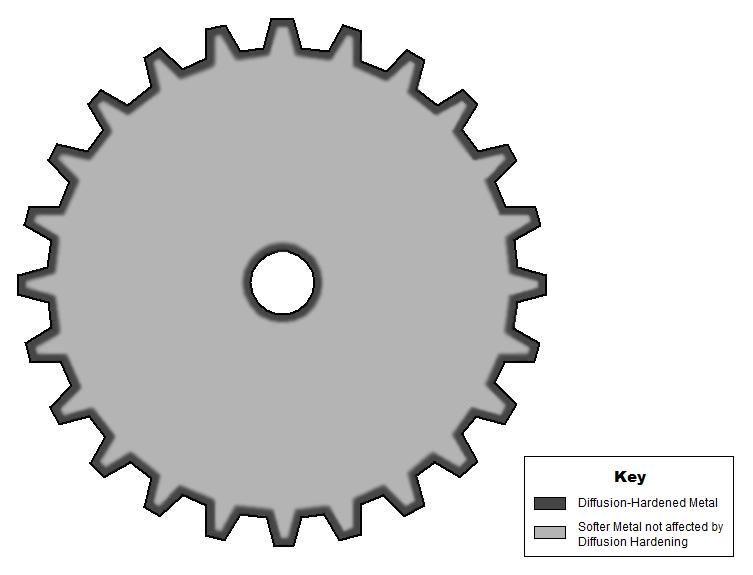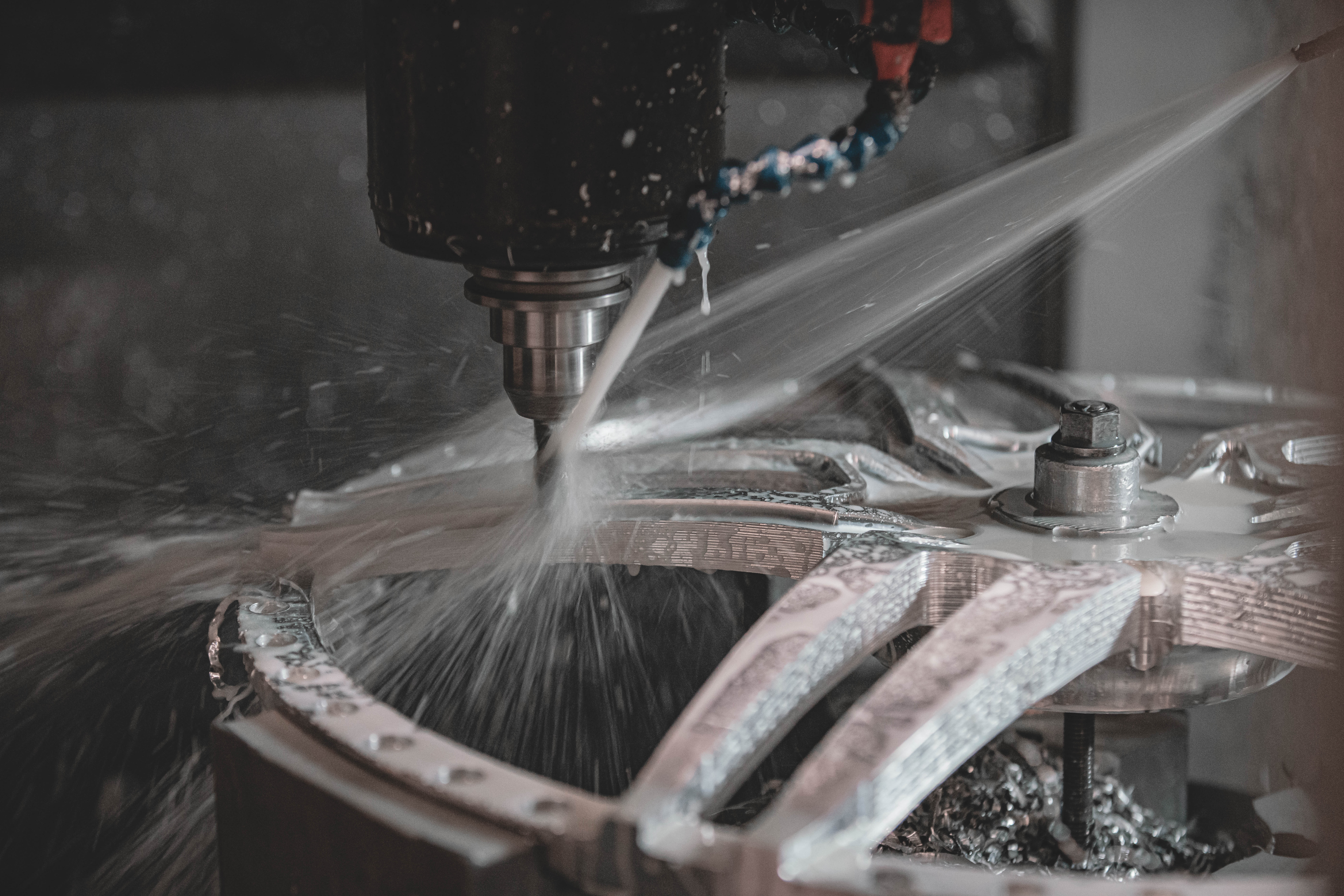|
Gear Shaping
Gear shaping is a machining process for creating teeth on a gear using a cutter. Gear shaping is a convenient and versatile method of gear cutting. It involves continuous, same-plane rotational cutting of gear. Process theory The types of cutters used for gear shaping can be grouped into four categories: disk, hub, shank, and helix, helical cutters. The cutters are essentially gears that are used to form the teeth. This method of gear cutting is based on the principle that any two gears will mesh if they are of the same pitch, proper helix angle, and proper tooth depth and thickness. Process characteristics By using a gear-shaped corresponding cutter that is rotated (in relation to a blank gear) produces the gear teeth. The cutters that are rotated are timed with the workpiece. This process produces internal gears, external gears, and integral gear-pinion arrangements. Process schematic The process of gear shaping uses a toothed disk cutter which reciprocates in axial rotatio ... [...More Info...] [...Related Items...] OR: [Wikipedia] [Google] [Baidu] |
Machining
Machining is a manufacturing process where a desired shape or part is created using the controlled removal of material, most often metal, from a larger piece of raw material by cutting. Machining is a form of subtractive manufacturing, which utilizes machine tools, in contrast to ''additive manufacturing'' (e.g. 3D printing processes, 3D printing), which uses controlled addition of material. Machining is a major process of the manufacture of many metal products, but it can also be used on other materials such as wood, plastic, ceramic, and composite material, composites. A person who specializes in machining is called a machinist. As a commercial venture, machining is generally performed in a machine shop, which consists of one or more workrooms containing primary machine tools. Although a machine shop can be a standalone operation, many businesses maintain internal machine shops or tool rooms that support their specialized needs. Much modern-day machining uses Numerical control, ... [...More Info...] [...Related Items...] OR: [Wikipedia] [Google] [Baidu] |
Gear
A gear or gearwheel is a rotating machine part typically used to transmit rotational motion and/or torque by means of a series of teeth that engage with compatible teeth of another gear or other part. The teeth can be integral saliences or cavities machined on the part, or separate pegs inserted into it. In the latter case, the gear is usually called a cogwheel. A cog may be one of those pegsDefinition of "cog" in the ''Oxford Learner's Dictionary'' online. Accessed on 2024-07-29.Definition of "cog" in the ''Merriam-Webster Dictionary'' online. Accessed on 2024-07-29. [...More Info...] [...Related Items...] OR: [Wikipedia] [Google] [Baidu] |
Helix
A helix (; ) is a shape like a cylindrical coil spring or the thread of a machine screw. It is a type of smooth space curve with tangent lines at a constant angle to a fixed axis. Helices are important in biology, as the DNA molecule is formed as two intertwined helices, and many proteins have helical substructures, known as alpha helices. The word ''helix'' comes from the Greek word , "twisted, curved". A "filled-in" helix – for example, a "spiral" (helical) ramp – is a surface called a '' helicoid''. Properties and types The pitch of a helix is the height of one complete helix turn, measured parallel to the axis of the helix. A double helix consists of two (typically congruent) helices with the same axis, differing by a translation along the axis. A circular helix (i.e. one with constant radius) has constant band curvature and constant torsion. The slope of a circular helix is commonly defined as the ratio of the circumference of the circular cylinder that it ... [...More Info...] [...Related Items...] OR: [Wikipedia] [Google] [Baidu] |
Internal Gear
A gear or gearwheel is a rotating machine part typically used to transmit rotational motion and/or torque by means of a series of teeth that engage with compatible teeth of another gear or other part. The teeth can be integral saliences or cavities machined on the part, or separate pegs inserted into it. In the latter case, the gear is usually called a cogwheel. A cog may be one of those pegsDefinition of "cog" in the ''Oxford Learner's Dictionary'' online. Accessed on 2024-07-29.Definition of "cog" in the ''Merriam-Webster Dictionary'' online. Accessed on 2024-07-29. [...More Info...] [...Related Items...] OR: [Wikipedia] [Google] [Baidu] |
Pinion
A pinion is a round gear—usually the smaller of two meshed gears—used in several applications, including drivetrain and rack and pinion systems. Applications Drivetrain Drivetrains usually feature a gear known as the pinion, which may vary in different systems, including * the typically smaller gear in a gear drive train (although in the first commercially successful steam locomotive—the ''Salamanca''—the ''pinion'' was rather large). In many cases, such as remote controlled toys, the pinion is also the drive gear for a reduction in speed, since electric motors operate at higher speed and lower torque than desirable at the wheels. However the reverse is true in watches, where gear trains commence with a high-torque, low-speed spring and terminate in the fast-and-weak escapement. * the smaller gear that drives in a 90-degree angle towards a crown gear in a differential drive. * the small front sprocket on a chain driven motorcycle. *the clutch bell gear when pai ... [...More Info...] [...Related Items...] OR: [Wikipedia] [Google] [Baidu] |
Spindle (tool)
In machine tools, a spindle is a rotating axis of the machine, which often has a shaft at its heart. The shaft itself is called a spindle, but also, in shop-floor practice, the word often is used metonymically to refer to the entire rotary unit, including not only the shaft itself, but its bearings and anything attached to it ( chuck, etc.). Spindles are electrically or pneumatically powered and come in various sizes. They are versatile in terms of material it can work with. Materials that spindles work with include embroidery, foam, glass, wood, etc. A machine tool may have several spindles, such as the headstock and tailstock spindles on a bench lathe. The main spindle is usually the biggest one. References to "the spindle" without further qualification imply the main spindle. Some machine tools that specialize in high-volume mass production have a group of 4, 6, or even more main spindles. These are called multispindle machines. For example, gang drills and many screw m ... [...More Info...] [...Related Items...] OR: [Wikipedia] [Google] [Baidu] |
Mandrel
A mandrel, mandril, or arbor is a tapered tool against which material can be forged, pressed, stretched or shaped (e.g., a ring mandrel - also called a triblet - used by jewellers to increase the diameter of a wedding ring), or a flanged or tapered or threaded bar that grips a workpiece to be machined in a lathe. A flanged mandrel is a parallel bar of a specific diameter with an integral flange towards one end, and threaded at the opposite end. Work is gripped between the flange and a nut on the thread. A tapered mandrel (often called a plain mandrel) has a taper of approximately 0.005 inches per foot and is designed to hold work by being driven into an accurate hole on the work, gripping the work by friction. A threaded mandrel may have a male or female thread, and work which has an opposing thread is screwed onto the mandrel. On a lathe, mandrels are commonly mounted between centres and driven by a lathe dog (typically flanged or tapered mandrels), but may also be gripped in ... [...More Info...] [...Related Items...] OR: [Wikipedia] [Google] [Baidu] |




